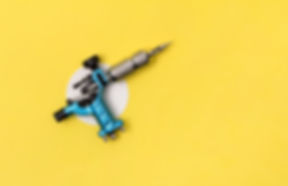
How to care for your tattoo
Aftercare starts as soon as your tattoo is done. The artist should apply a thin layer of petroleum ointment over the tattoo, and then cover the area in a bandage or plastic wrap. This covering prevents bacteria from getting into your skin. It also protects the tattoo from rubbing on your clothes and getting irritated.
Keep the dressing on for a few hours. It will help absorb any fluid or excess ink that leaks from the tattoo.
After a few hours, you can remove the bandage. Wash your hands first with lukewarm water and soap. Then gently rinse the tattoo with PH-neutral soap and water.
Pat your skin dry with a soft cloth. Apply a small amount of ointment to the tattoo. You can keep the bandage off at this point to let your skin
breathe.
While your tattoo heals, you should:
-
wear sun-protective clothing whenever you go outside
-
call your tattoo artist or doctor if you have any signs of infection or other
problems You shouldn’t:
-
cover your tattoo with sunblock until it’s fully healed
-
scratch or pick at the tattoo
-
wear tight clothing over the tattoo
-
go swimming or immerse your body in water (quick shower is fine)
How quickly you heal depends on the size of your tattoo and how intricate it is. Bigger tattoos will stay red and swollen longer, because they cause more trauma to your skin.
Day 1
You’ll come home from the artist with a bandage over your tattoo. After a few hours, you can remove it. You should ask your artist for specifics about how long to wait.
Once the bandage comes off, you’ll probably notice fluid oozing from the tattoo. This is blood, plasma (the clear part of blood), and some extra ink. It’s normal. Your skin will also be red and sore. It might feel slightly warm to the touch.
With clean hands, wash the tattoo with warm water and a fragrance-free soap. Apply the ointment. Leave the bandage off so the tattoo can heal. In case you sleep with animals or have some dirty activities planned that could infect your tattoo, it might be a good idea to keep the bandage on until the task has been completed. Don't keep it on for more than 24hours.
Days 2 to 3
Your tattoo will have a duller, cloudy appearance by now. This happens as your skin heals. Scabs will start to form.
Wash your tattoo once or twice a day and apply a fragrance- and alcohol-free moisturizer. When you wash, you might notice some ink running into the sink. This is just excess ink that’s come up through your skin.
Days 4 to 6
The redness should start to fade. You’ll probably notice some light scabbing over the tattoo. The scabs shouldn’t be as thick as scabs you get when you cut yourself, but they will be raised. Don’t pick at the scabs — this can cause scarring.
Keep washing your tattoo once or twice a day. Apply moisturizer.
Days 6 to 14
The scabs have hardened and will begin to flake off. Don’t pick at them or try to pull them off, let them come off naturally. Otherwise, you could pull out the ink and leave scars.
At this point your skin may feel very itchy. Gently rub on a moisturizer several times a day to relieve the itch.
If your tattoo is still red and swollen at this point, you might have an infection. Go back to your artist or see a doctor.
Days 15 to 30
In this last stage of healing, most of the big flakes will be gone and the scabs should be going away. You might still see some dead skin, but it should eventually clear up too. The tattooed area might still look dry and dull. Keep moisturizing until the skin looks hydrated again.
By the second or third week, the outer layers of skin should have healed. It may take three to four months for the lower layers to completely heal. By the end of your third month, the tattoo should look as bright and vivid as the artist intended.